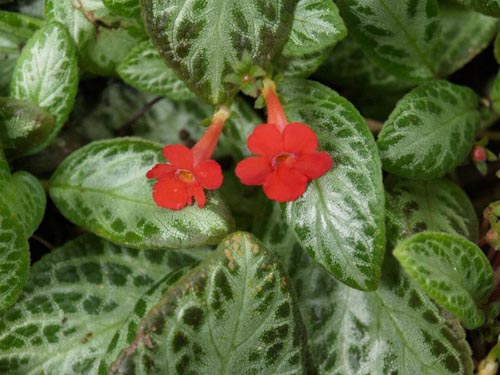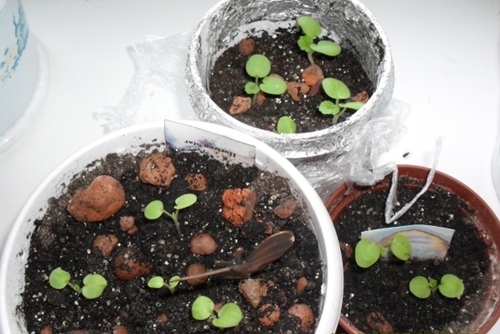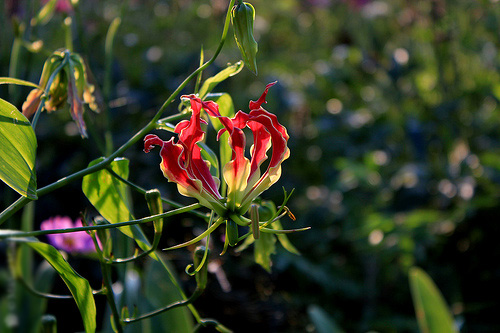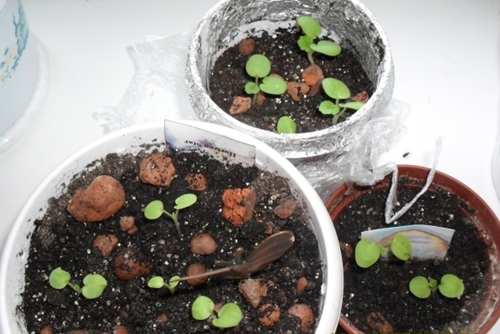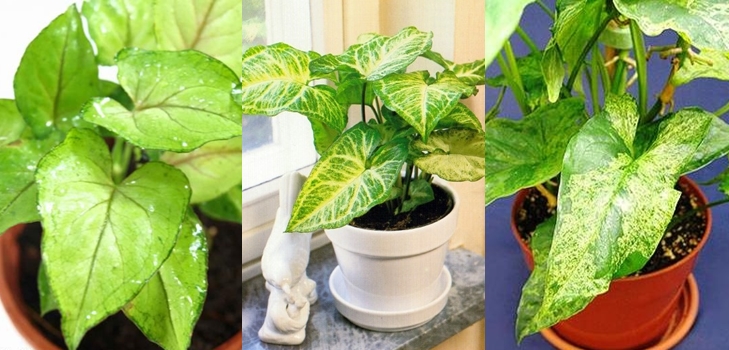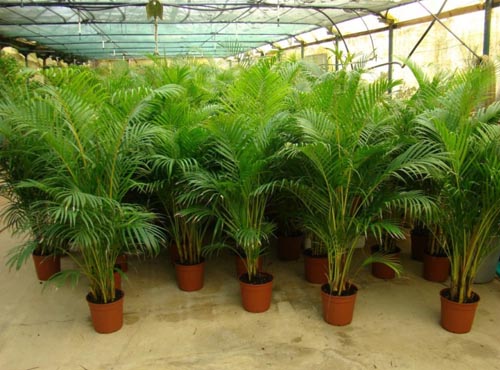Syngonium

Singongiums - graceful perennial climbing creepers,native to the tropical forests of South America. They have one interesting feature - their leaves with age are significantly modified. Thus, young leaves have an undissolved arrow-shaped shape. Over time, they become pinnate, palpate. The syngoniums of different species, as you can see in the photo, also have a different coloring of the leaves. They look very impressive. Note that the plant is poisonous!
Sigonium can be grown ampel orupright. In the first case, the pot must be high enough to hang, then the plant beautifully hangs down. In the second case, a support (a tube with moss, coconut coir) will be required. Syngonium wraps around it, sprouts with air roots and stretches up, reaching a height of more than one and a half meters.
Care of the home in syngonyum
Singoniums can be kept at home without much trouble. These house flowers are rather unpretentious, they well withstand the conditions of modern apartments, without requiring much care. Prefer shaded places, but in bright rooms (without direct sunlight), too, feel good. In this case varieties with variegated leaves are more photophilous.
The best are the syngonyumina of the eastern,western windows. In winter, it is better to move this plant closer to the window, because of the lack of illumination during this period, its leaves may fade, lose color. The syngoniums develop well at a temperature of 18..24 ° C (17.19 ° C in winter). In this case, they are not afraid of short-term (up to 10 ° C) temperature drops.
Water this vine moderately, regularly, softwater that does not contain lime. The syngoniums, like the inhabitants of the tropics, prefer the increased humidity of the environment. In summer, they should also be sprinkled with soft water, or wipe the leaves with a damp sponge. In winter, it is enough to clean away from central heating batteries.
You can put the pot in a tray with wet peator expanded clay. Fertilize syngoniums in the period of active spring-summer growth every 2 weeks with liquid fertilizers (organic or mineral). It is necessary to watch closely, that in fertilizers the amount of calcium was minimal.
Reproduction of the syngoniums
This indoor plant multiplies by piecesstalk or tips of shoots with air roots. They easily take root in a light earthy, sandy, peat mixture. After that, they are planted alone in a small pot or several in a large pot. The mother plant begins to branch after cutting the tip, giving a lot of lateral shoots.
Diseases and pests
Syngoniums are sometimes affected by scutes, aphids, thrips. To combat them, insecticides or soap solution are used. Diseases:
- yellow leaves
- lack of nutrition;
- brown spots and edges of leaves
- excessive dryness of the environment;
- crushing leaves and discolouring
- lack of illumination.

